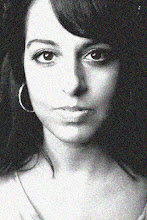DALLAS (April 15, 2011) – There is no Tibetan equivalent for the word “art” as it is known in the West. The closest approximation is lha dri pa, literally, “to draw a deity.” That premise will be explored in the exhibition Tradition Transformed: Tibetan Artists Respond at the Crow Collection of Asian Art from Saturday, May 21, through Sunday, September 11, 2011. Free and open to the public, the exhibition will feature 24 works of art including paintings and alternative media by eight Tibetan artists.
Traditionally, neither the Tibetan language nor the Tibetan cultural framework has recognized art for art’s sake, and an artist’s efficacy rests in his ability to precisely replicate an established visual language and portray the essence of a particular deity. This puts contemporary Tibetan artists in a precarious position: Their work is informed by Tibetan artistic traditions, but the value of their work is judged within different boundaries and by different standards. The contemporary Tibetan artist faces the demands of both a global audience and a specific inheritance of formal and ideological demands as well as a rich array of artistic tools.
The artists whose works are shown grapple with these issues of cultural and artistic negotiation, working with traditional forms in innovative ways. Technology, travel, displacement, and personal artistic freedom have informed their individual responses to the complex interaction between tradition and modernity in art and culture. Artists Dedron, Gonkar Gyatso, Losang Gyatso, Kesang Lamdark, Tenzin Norbu, Tenzing Rigdol, Tsherin Sherpa and Penba Wangdu were invited by co-curators Rachel Weingeist and Becky Bloom to submit new and recent works for the exhibition organized by the Rubin Museum of Art, New York. Specific works by the same artists were then selected from private collections to complement these new pieces and highlight each artist’s range.
Of the eight artists, four were born in Tibet, three are from Nepal and one was born in India. Dedron, Tenzin Norbu and Penba Wangdu continue to live in their Himalayan homelands, while the others have emigrated to Europe and the United States at different stages in their lives. Exposed to training in traditional Tibetan painting and the strict interpretations prescribed by Buddhist religion, these artists break from spiritual formulas and artistic norms by experimenting with alternative media and by extracting sacred symbols from their religious context, repurposing them for self-expression and social commentary.
Sacred and profane are juxtaposed and rearranged in many of these works. The large Buddha in Gonkar Gyatso’s L.A. Confidential (2007) is filled with tiny, disarmingly colorful stickers, many of which are icons of a modern consumer society. Dedron – the only woman featured in the exhibition and one of a handful of Tibetan women artists – says that her work is not a response to politics, but rather a means for raising awareness on behalf of women and animals. Using deep brown and gold pigments found in Tibet’s mineral-rich soil, Dedron depicts her home and concerns – mountains, yaks, birds, nuns, clouds and women’s spheres – conveying a sense of melancholy at diminishing respect for the natural world.
Many of the featured works of art strike a balance between traditional Tibetan culture and the cultures of the artists’ adopted homelands. The Buddha in Rigdol’s Excuse me Sir, Which Way is to My Home? (2008), for example, is cut from a roadmap of the United States. Traditional iconography calls for the Buddha to be tempted from his enlightenment by women, armed attackers and self-doubt. Rather, Rigdol’s Buddha is surrounded by temptations of the modern variety: cologne bottles, cars and iPhones.
Tsherin Sherpa makes a case for the value of transforming traditions in order to keep them alive. Preservation Project #1 (2009) features the Buddha’s head and many hands formed into gestures of sacred conversation mudras, all pressed against the inside of a glass jar. Sherpa observes that many in his generation have “not received a formal education on Buddhist philosophy.” They feel disconnected from “the true essence of Buddhist practice” and in danger of simply ritualistic performance. His painting provokes the question, “What is being preserved?”
Tradition Transformed: Tibetan Artists Respond was previously exhibited at the Rubin as well as the Hood Museum of Art at Dartmouth College. Complimenting the exhibition is a 200-page, full-color, hardcover catalogue featuring the eight artists whose works appear in Dallas, along with several other Tibetan artists. Co-published by ArtsAsiaPacific and the Rubin Museum of Art, the catalogue includes essays by H.G. Masters, Michael R. Sheehy and Anna Bremm and an interview with Michael R. Sheehy and Paolo Vanzo.
Admission is free. The Crow Collection of Asian Art is open Tuesdays – Thursdays (10 a.m. – 9 p.m.), Fridays – Sundays (10 a.m. – 6 p.m.) and closed on Mondays. For more information, please go to crowcollection.org or call 214-979-6430.
About the Crow Collection
The Trammell & Margaret Crow Collection of Asian Art is located in the Arts District of downtown Dallas. The Crow Collection offers three floors of galleries with changing exhibitions of the arts of China, Japan, India and Southeast Asia. LinkAsia, a newly designated gallery space at the Crow Collection is devoted to artists and media providing perspectives on contemporary Asia. The museum offers a serene setting for quiet reflection and shared learning throughout the galleries and in Snuff Bottle Court – the outdoor Japanese garden at the corner of Harwood and Flora.
IMAGES AVAILABLE UPON REQUEST
###
MEDIA CONTACT:
Taylor Mayad
cell/214-435-7756
taylor@mayadpr.com










No comments:
Post a Comment